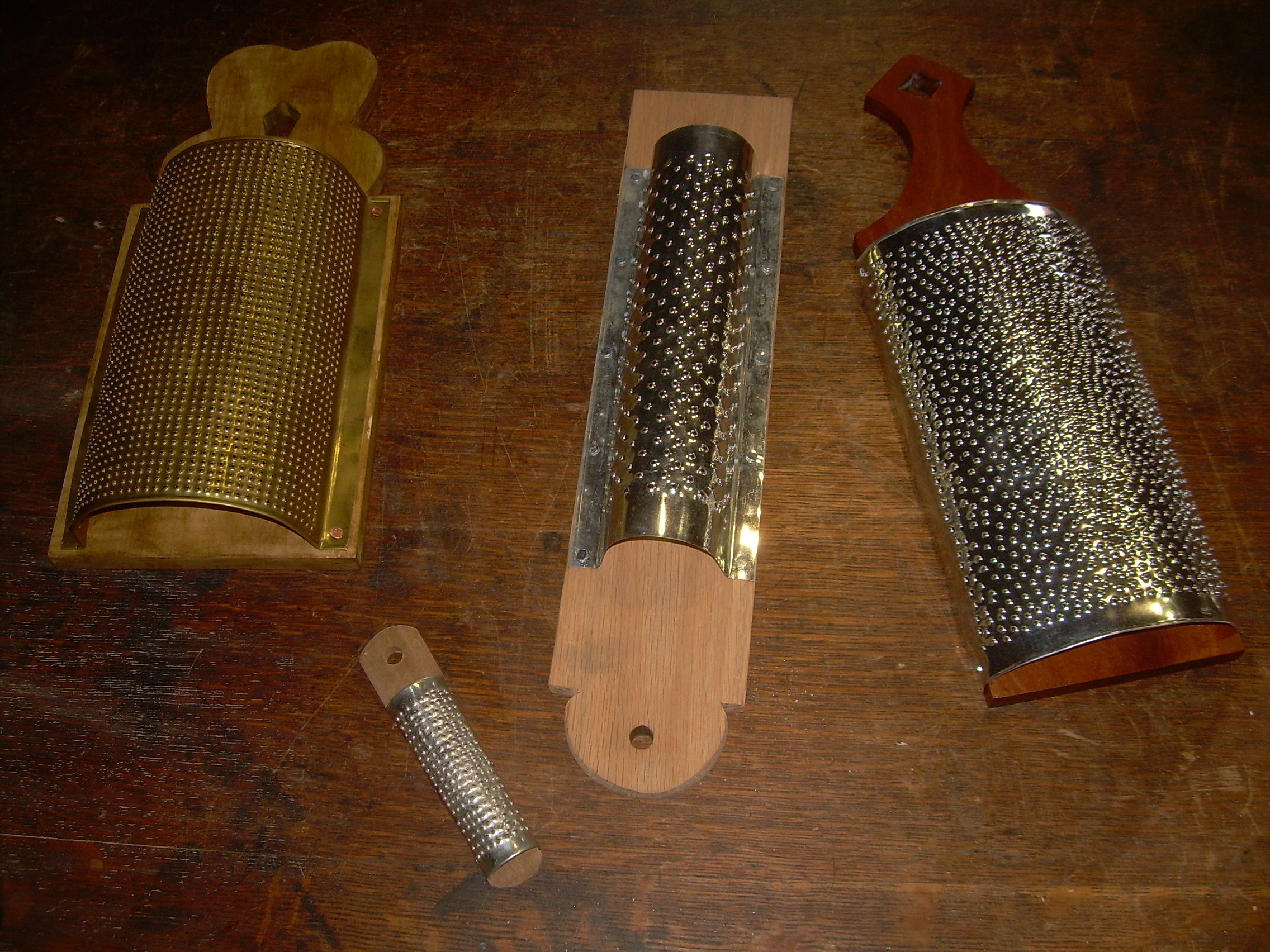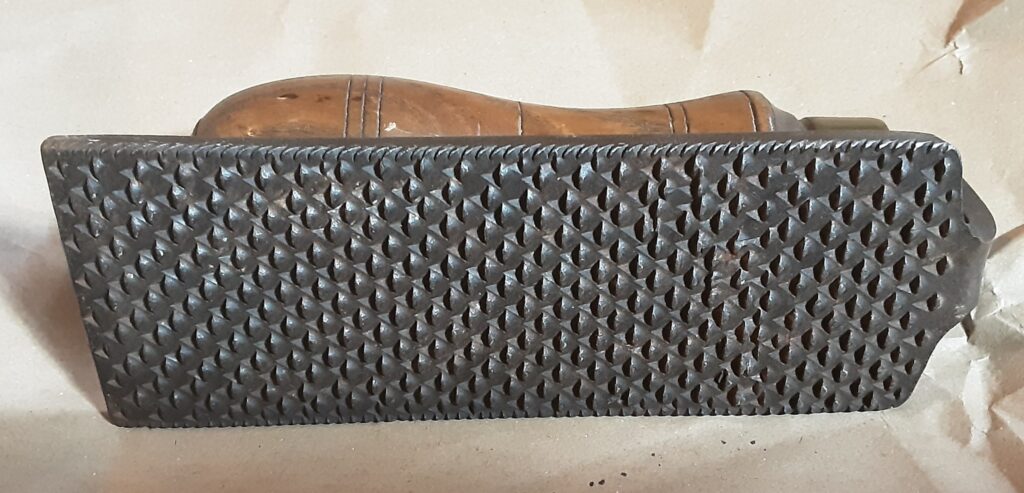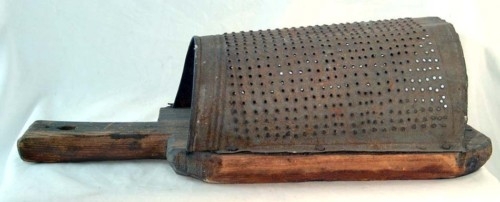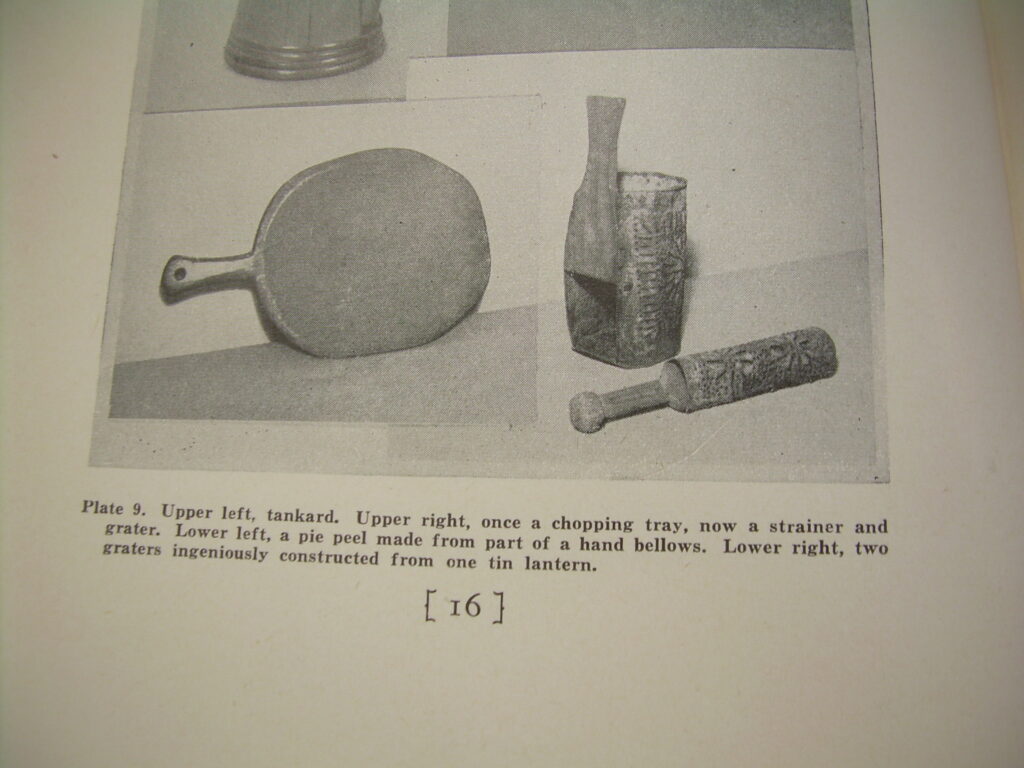
L to R Popular style reproduction in brass, a nutmeg grater, a copy from a painting by Johann Wilhelm Meil 1733-1805, and a North Carolina Moravian style.
Rasps, graters, and boarded graters.
The Law French Dictionary 1701 defines a Grater as “to grate bread” rather than the modern definition of “to make shreds of cheese or other food”.
In the 17th and 18th century a bread grater was also used to grate meat and vegetables as in “Take the best Hogs Liver you can get, and boyl it extreamly, till it be as hard as a stone, then lay it to cool, and being cold, upon a bread-grater grate it all to powder; then sift it through . a-fine meal-sieve.” from The English Housewife by Gervase Markham, 1683. Another example comes from The history of the Royal Society of London Volume 3 by Thomas Birch 1757: “Mr. Hooke related, that had affirmed, that by rasping his apples- with a bread grater he was able to make almost a third part more of cider than by the common way.” Also, The lady’s companion: or, An infallible guide to the fair sex by Lady 1743: Rasp some bacon.
Sources are specific in the type of material to use. Zoonomia; or, The laws of organic life … by Erasmus Darwin, Robert Waring Darwin 1796: “Thus if the root of white briony be rasped into cold water, by means of a bread-grater made of a tinned iron plate, and agitated in it, the acrid juice of the root along with the mucilage will be dissolved…”
The Annual register of world events: a review of the year, Volume 22 1796 in Dodsley’s annual register by Edmund Burke 1780 “The potatoes must be well washed; they must be ground fine with the assistance of a tin rasp.”
A bread grater is also called a rasp or more legthy name is a raspatory.
An universal etymological dictionary by Nathan Bailey 1764 :Raspatory An instrument to chip bread with.
A new general english dictionary by Thomas Dyche 1760: Rasp A course toothed file, used to cot away wood, horn, Sec. also a broad, flat file with a handle, somewhat representing a smoothing-iron, which the taken use to rub off the crust of their loaves with.
Here is an iron rasp it does not have holes but has teeth.

Holes random or not? Most original graters have random holes rather than the uniform pattern of holes found on the brass and the nutmeg grater shown above. Around the time of the Civil War when machine stamped parts became available the holes became uniform. Prior to the mass production spurred on by the Industrial Revolution graters were a make do item. In times of need a grater could be fashioned from whatever was on hand such as from tin pails or old stove pipe. A grater could have been made from an old coffee pot and two were made from an old barn lantern item as seen in the images below.


